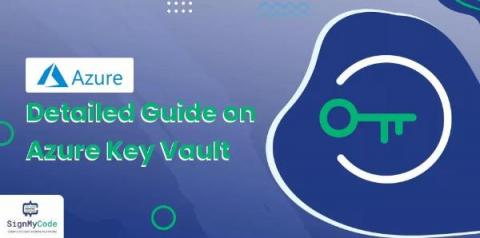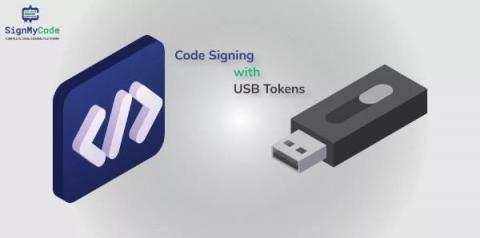Security | Threat Detection | Cyberattacks | DevSecOps | Compliance
Code Signing
How to Sign .EXE File Using YubiKey Manager? - Detailed Guide from SignMyCode.com
Comprehensive Guide on Azure Key Vault
Discover in this article, What is Azure, its types, and the difference between standard and premium Azure key vaults. Learn about Managed HSM Vs. Vault, features, and compatibilities.
DigiCert Code Signing Changes: New Private Key Storage & API Modifications
Beginning on June 1, 2023, at 00:00 UTC, industry standards will mandate that private keys for code signing certificates must be stored on hardware that meets specific security certifications such as FIPS 140 Level 2, Common Criteria EAL 4+, or an equivalent standard. This requirement applies to all new code signing certificate requests and requests for renewal and reissue of existing certificates.
Simplifying Code Signing Certificate Delivery Methods (Private Key Storage Options)
At SignMyCode, we understand the importance of streamlined and secure code signing certificate delivery. Our certificate delivery methods have been updated to ensure compliance with the latest standards. This article pertains to Code Signing certificates acquired after May 14, 2023. All Code Signing certificates now require installation on physical hardware tokens.
What are SafeNet Luna Network HSM 7 and Thales Luna Network HSM 7?
We will dive into the world of Luna Network HSM 7. You can explore its capabilities and the two options available: SafeNet Luna Network HSM 7 and Thales Luna Network HSM 7. Also, discover how these solutions enhance security and protect your cryptographic keys.
CA/B Forum Baseline Requirements v2.8 for Code Signing Certificates
Under the CA/B Forum BRs for Code Signing Certificates v2.8, Sectigo Certificate Services has implemented a hosted key attestation service to ensure the verification of hardware-backed keypairs during the issuance and management of Code Signing Certificates.
Code Signing with USB Tokens: A Comprehensive Guide
USB, hardware, or cryptographic tokens are portable devices that securely store cryptographic keys. These tokens typically connect to a computer or other devices via USB. USB tokens offer a compact and convenient solution for storing and protecting sensitive cryptographic keys, certificates, and other credentials. They are designed to provide strong encryption, tamper-resistant hardware, and secure key storage.
Certera EV Code Signing Certificate for Highest Software Legitimacy and Integrity
Certera is the modern and affordable certificate authority offering code signing and SSL certificates. It is sub CA is globally trusted CA named Sectigo. Digital certificates called EV (Extended Validation) code signing certificates are used to encrypt and sign code, scripts, and software programs. Users may have a high level of confidence thanks to these certificates that the code being signed is genuine, hasn’t been tampered with, and originates from a reliable source.
FIPS 140-3 Certification and Levels: FIPS 140-2 Vs 140-3
The Federal Information Processing Standard (FIPS) 140-3, is a collection of standards released by the United States government to examine cryptography modules. It explains how to design, develop, and run a cryptography module. The National Institute of Standards and Technology (NIST) and Communications Security Establishment (CSE) created FIPS 140-3 to safeguard critical, unclassified information.











